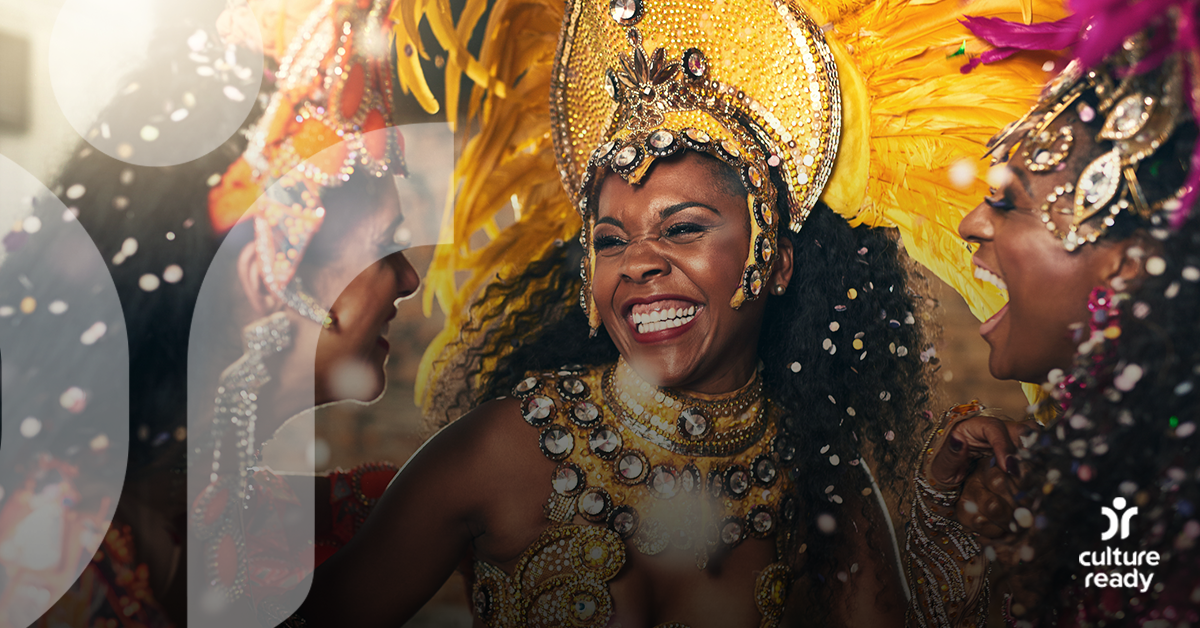Carnival in Rio De Janeiro
The annual Carnival celebration in Rio de Janeiro, Brazil, is the largest festival in the world. Every year, five million people gather in Rio for a week-long party, with two million revelers in the streets each day. Carnival has Catholic origins as a celebration leading up to the 40 days of Lent. It takes various forms around the world.
In Brazil, Carnival combines Portuguese and African culture. The first Brazilian Carnival took place in 1723 as a food festival before the Lent fasting period; then, over the following centuries, African music and dancing fused with the Catholic observance to create the party that happens today.
In the 1920s, samba schools – a form of dancing and drumming community groups – took center stage in the Rio de Janerio Carnival. Annually, the samba schools choreograph a performance to compete and participate in the Carnival parades. Throughout Rio, there are 200 samba schools divided into five different leagues.
Parades are the main event of the Rio Carnival festivities. The energetic, colorful parades consist of floats, dancing, and elaborate costumes. Judges observe the performances and declare a winner, which is a big point of pride for the samba schools.
The most prestigious samba school parade takes place at the Sambadrome, an expansive open-air location. The samba schools compete to prove they are the most impressive performers. The Sambadrome hosts a runway with stadium seating full of party-goers on either side. Fourteen samba schools participate in the Sambadrome celebration – the groups spend months training and rehearsing to put on the best performance possible. Each samba school picks a specific theme to be reflected in their costumes and parade float. The biggest celebration takes place on Shrove Tuesday right before Ash Wednesday.
Beyond the Sambadrome competition, daily parties unfold in the streets of Rio. These street celebrations are called blocos in Portuguese. Blocos consist of dancing, drinking, and elaborate costumes as revelers follow a slow-moving parade of floats through the city. Some of the blocos have specific themes, but for the most part, any ensemble is welcome. The Cordão da Bola Preta is one of the biggest blocos during Carnival and attracts around one million people each year. If you plan on attending, the theme for Cordão da Bola Preta is black and white polka dots.
In the evening, Carnival balls take place throughout the city. Like other Carnival celebrations, costumes are encouraged, but the events host a fancier atmosphere. Celebrities often gather at Carnival balls, enjoying the glitzy party atmosphere. Clara Delmastro, the Italian Ambassador’s wife, hosted the first Rio Carnival ball in 1840, and the celebrations have grown in popularity ever since.
Learn More:
How to Celebrate Rio Carnival
What Are the Rio Carnival Balls?
How Rio's Carnival Became The Biggest Party On Earth
